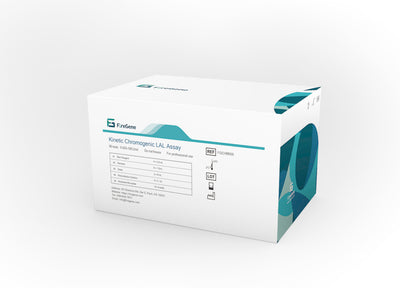Endotoxin Quantification Using Chromogenic Endotoxin Quant Kit

。
# Endotoxin Quantification Using Chromogenic Endotoxin Quant Kit
## Introduction to Endotoxin and Its Importance
Endotoxins, also known as lipopolysaccharides (LPS), are components of the outer membrane of Gram-negative bacteria. These molecules can trigger strong immune responses in humans and animals, making their detection and quantification crucial in pharmaceutical, medical device, and biotechnology industries.
## Understanding the Chromogenic Endotoxin Quant Kit
The Chromogenic Endotoxin Quant Kit is a highly sensitive and specific tool designed for the quantitative measurement of endotoxin levels in various samples. This kit utilizes a chromogenic substrate that reacts with the endotoxin-activated enzyme cascade, producing a color change proportional to the endotoxin concentration.
### Key Features of the Kit
– High sensitivity with detection limits as low as 0.005 EU/mL
– Wide dynamic range for accurate quantification
– Compatibility with various sample types
– Rapid results compared to traditional methods
– Standardized procedure following international guidelines
## Principle of the Chromogenic Assay
The assay is based on the Limulus Amebocyte Lysate (LAL) reaction, which involves the following steps:
– Endotoxin activates Factor C in the LAL reagent
– Activated Factor C initiates a cascade of enzymatic reactions
– The final step cleaves a chromogenic substrate, releasing p-nitroaniline (pNA)
– The intensity of the yellow color produced is measured spectrophotometrically at 405 nm
## Step-by-Step Protocol for Endotoxin Quantification
### Sample Preparation
1. Collect samples in endotoxin-free containers
2. If necessary, dilute samples with endotoxin-free water
3. Prepare appropriate controls and standards
### Assay Procedure
1. Reconstitute the LAL reagent according to manufacturer instructions
2. Add samples, standards, and controls to the reaction plate
3. Incubate at 37°C for the recommended time
4. Measure absorbance at 405 nm
5. Calculate endotoxin concentration using the standard curve
## Applications of Endotoxin Quantification
The Chromogenic Endotoxin Quant Kit finds applications in various fields:
– Pharmaceutical quality control
– Medical device testing
– Water quality monitoring
– Research and development
– Clinical diagnostics
## Advantages Over Traditional Methods
Compared to the gel-clot method, the chromogenic assay offers:
– Quantitative rather than qualitative results
– Higher sensitivity
– Better reproducibility
– Faster turnaround time
– Objective measurement (spectrophotometric vs. visual interpretation)
Keyword: Chromogenic Endotoxin Quant Kit
## Troubleshooting Common Issues
Common challenges and their solutions:
Problem | Possible Cause | Solution
High background | Contaminated reagents | Use fresh, endotoxin-free reagents
Low sensitivity | Improper storage | Store reagents as recommended
Non-linear standard curve | Improper dilution | Prepare fresh standard dilutions
High variability | Inconsistent incubation | Ensure uniform temperature control
## Conclusion
The Chromogenic Endotoxin Quant Kit provides a reliable, sensitive, and efficient method for endotoxin quantification. Its quantitative nature and standardized protocol make it an essential tool for industries requiring strict endotoxin control. By following proper procedures and quality control measures, users can obtain accurate and reproducible results for critical decision-making processes.

